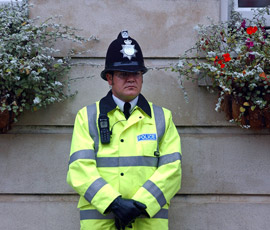Fewer police for rural residents

Rural areas have fewer police officers per head of population than urban areas, reveal figures obtained by the Countryside Alliance.
The alliance published the statistics as communities prepared to vote in the first Police and Crime Commissioner (PCC) elections on Thursday (15 November). Commissioners will set the policing plan and budgets for their force area – and hold chief constables to account for cutting crime.
There was one police officer for every 1,037 rural residents, compared to one officer for every 581 urban residents, said the alliance. Similarly, one police community support officer would be expected to cover 4,794 rural people compared to 3,530 urban people.
| Video: Crime advice |
|---|
In our video Matthew Scott, chief claims manager with rural insurer NFU Mutual, outlines how farmers can help avoid becoming victims of crime.
|
Figures for special officers were less stark. But there was still a difference. In 2011-2012 there was one special officer for 3,335 people in rural areas compared to one special officer for 3,004 people in urban areas.
A key task for the elected PCCs would be to ensure rural areas did not see police numbers depleted further, said alliance executive chairman Barney White-Spunner.
“These figures will make worrying reading for country people. Any reduction in police funding will require careful planning so as not to disadvantage those in the countryside.”
See more news on rural crime on our dedicated page.
